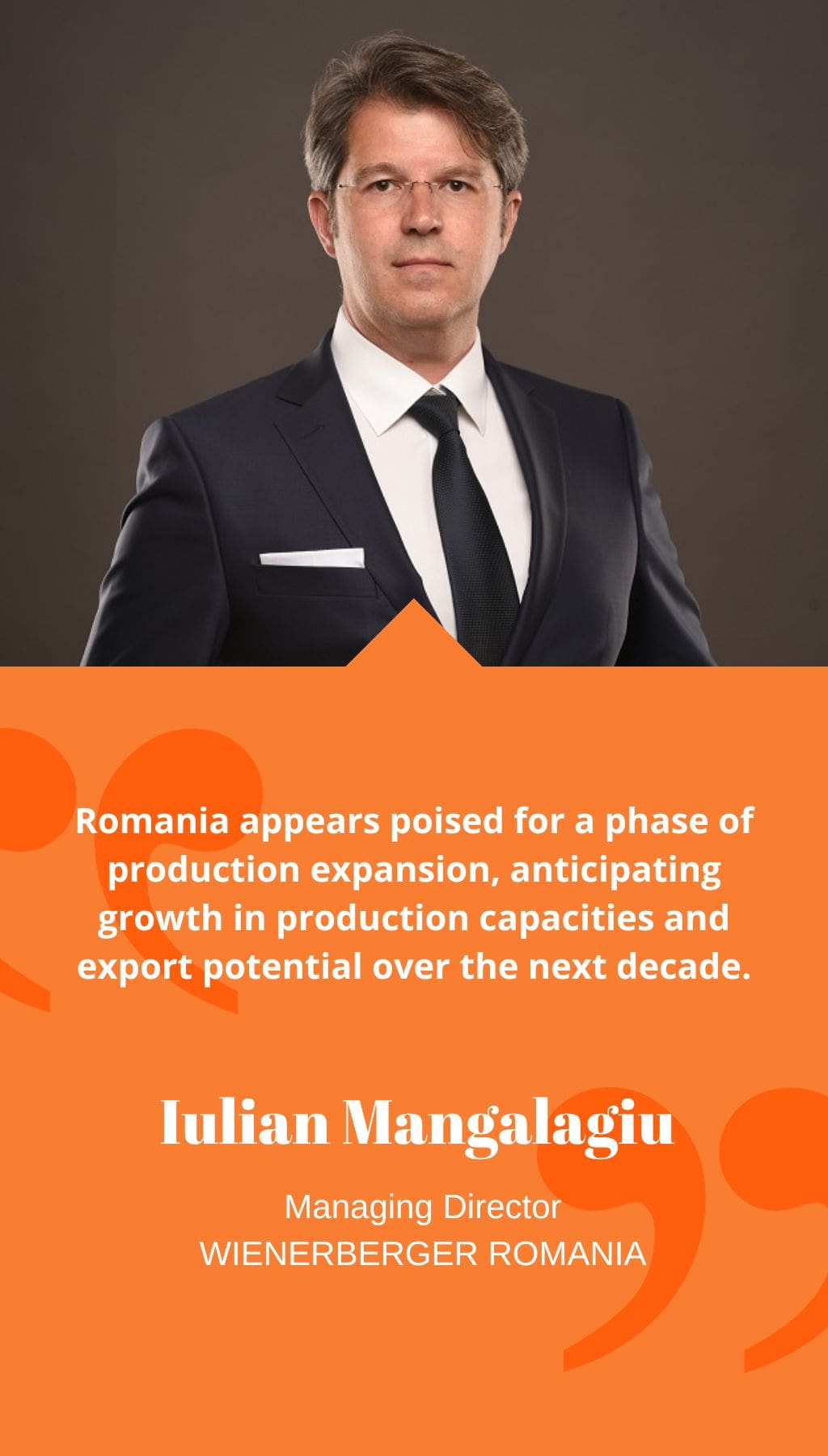
- Romania | 18 April 2021

What’s your vision for Wienerberger in Romania during your tenure?
My aim is to solidify Wienerberger’s presence in Romania by nurturing a proficient management team and establishing a robust market foothold. We’ve transitioned from merely producing bricks and masonry to offering comprehensive construction solutions. Presently, we operate across four divisions—brick masonry, ceramic roof tiles, paving solutions, and ceramic tiles for facades, catering primarily to the residential sector, with applications in offices and logistics.
With a thriving residential sector in 2020, how did it impact Wienerberger’s performance amid the pandemic?
2020 proved to be a landmark year for Wienerberger Romania, recording a turnover exceeding EUR 100 million, thanks to synchronized market demand and internal developmental projects. About 40% of our workforce, including myself, continued office work in shifts, emphasizing our teamwork-centric approach.
What motivated establishing a strong production base in Romania, and has it been a smooth journey?
Romania’s burgeoning market presents ample opportunities, making it an ideal landscape for innovation. Wienerberger, as pioneers in ceramic blocks, finds Romania receptive. We import Western technologies, operating seven factories here, leveraging the market’s openness to new ideas and innovations.
Acquiring and retaining skilled labor is a challenge in your industry—how does Wienerberger navigate this?
We’ve been fortunate in finding suitable talent so far. Romania’s resource-rich market offers a pool of skilled professionals. We prioritize attitude over aptitude, seeking proactive, diligent, and honest individuals who align with our company culture. We train workers directly in our factories, emphasizing specific skillsets vital to our operations.
Innovation is key—how does Wienerberger implement these concepts in the construction materials industry?
Last year, we invested EUR 3 million in a special adhesive-based prototype brick, streamlining construction with quicker installation and reduced storage needs. We also introduced insulated lintels for doors and windows, focusing on energy efficiency and sustainability, aligning with EU directives and Romania’s green initiatives.
What standout advantages and challenges does Wienerberger face in the Romanian real estate market?
Our factories in Eastern Europe, including Romania, boast updated facilities. The market embraces digitalization, enabling instant data access between our Romanian factories and Vienna. Challenges include population decline, rising raw material costs, and the risk of skilled workforce migration.
What’s Wienerberger’s focus in the next two to three years?
We plan to sustain our momentum, emphasizing energy efficiency and a reduced carbon footprint. Increasing investments in Romania, expanding our product range, and intensifying digitalization efforts in offices and factories are key goals aligned with our HQ strategy.
Any closing thoughts on the Romanian real estate and construction materials market?
Romania appears poised for a phase of production expansion, anticipating growth in production capacities and export potential over the next decade.














